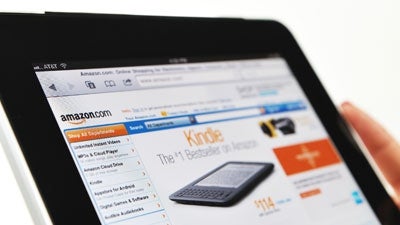In a previous blog, we defined what content personalization is and why it matters. However, if you missed that post, personalization is all about making the content and web experience more relevant to the individual.
Based off collected data, personalized content adapts in real time to serve each user’s unique needs. Personalized content is context sensitive and instantaneous. A great example of content personalization is Amazon. Based on your preferences and behavior patterns, Amazon displays relevant product, which encourages you to buy and allows you to have a more personal web experience.
There are different strategies to approaching content personalization. Channel-based or omnichannel personalization aims to deliver personalized experiences across different channels and devices based on data from email, on-site, off-site, and even offline data—all in real time. This means that a user will see content specifically suited for the channel they choose to use, whether it be a desktop, tablet, or smartphone. Along with that, the content takes advantage of the particular channel’s strengths and unique features. Each channel has different variables that can be personalized for the user.
On-Page Personalization
The most common personalization channel is on-page. Web pages like Amazon are personalized based on users’ interest, social category, context, items purchased, or pages viewed. So, if you browsed Amazon for a smartphone, the page would automatically display similar phones or mobile gear that you are most likely to be interested in based on your past preferences and behavior patterns, both on and off the site. Offering personalized website experiences is arguably the most important principle of modern digital marketing, since it tailors what visitors see automatically, and pushes them down the sales funnel more efficiently than anything else. Indeed we’ve reached the point where consumers expect this from every site, not just those that are retail-focused.
Email Personalization
Another channel that can be personalized is email. As a hypothetical example, let’s consider an email from Netflix to a customer. If Netflix sends an email to a customer, it might include dynamic tag—a way to highly personalize emails by inputting information you already have about the customer.
From Netflix’s perspective the email would read, “Dear [firstname] [lastname], thank you for choosing Netflix.” However, from the customer John Doe’s perspective the email would read as follows: “Dear John Doe, thank you for choosing Netflix.”
The possibilities of dynamic tags are endless, but some other examples might include, [phonenumber], [industryname], [location], [jobtitle], or [companyname]. The truth is, you can create dynamic tags to serve whatever purpose you want, so long as you have the correct data to make it work. Just keep in mind, over personalizing is one of the pitfalls of email personalization.
Social Media and Mobile Personalization
Social media and mobile are two up-and-coming personalization channels. Marketers are finding new ways to personalize for both, but have only scratched the surface so far. In particular, marketers have found that text messages are an effective way to personalize for mobile. Mobile apps and websites can also be tailored toward the user. For example, a news aggregation app like Flipboard shows you relevant content based on your preferences and behavior patterns, so you usually won’t see news or content that you aren’t interested in.
Social media is a tricky channel for personalization because if content is not personalized enough due to automation, it may look like spam to the user. However,
Hubspot argues that a “customized social interaction at the right time can be a powerful marketing tool.”
Since users are accessing the web with a variety of different devices, personalizing content for each channel makes sense. Even within each channel, there are sub-categories of personalization that can be implemented, such as personalizing email for desktop vs. mobile.
Takeaway
By collecting, analyzing, and leveraging data and behavior patterns, you can tailor your website experience towards each visitor’s unique interests and needs. This, in turn, should encourage customers to stay on your website, increase conversions, and ROI. Content that lacks personalization will do the opposite.
If a customer visits your website and is greeted with a bunch of content they don’t care about, they will quickly leave and find a website that better caters to their interests and needs. As an increasing amount of companies adopt personalization techniques, brand websites that avoid them may eventually see their conversion rates and ROI drop. Personalization is a must for any modern business with an online presence, and it will only become more important as more companies adopt personalization and customers become accustomed to such content.
This article was originally published by SyneCore















